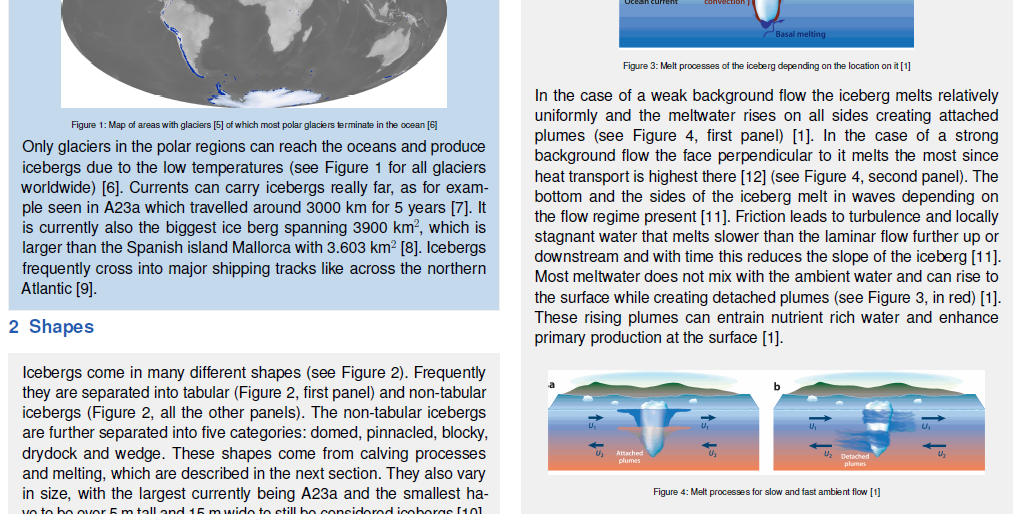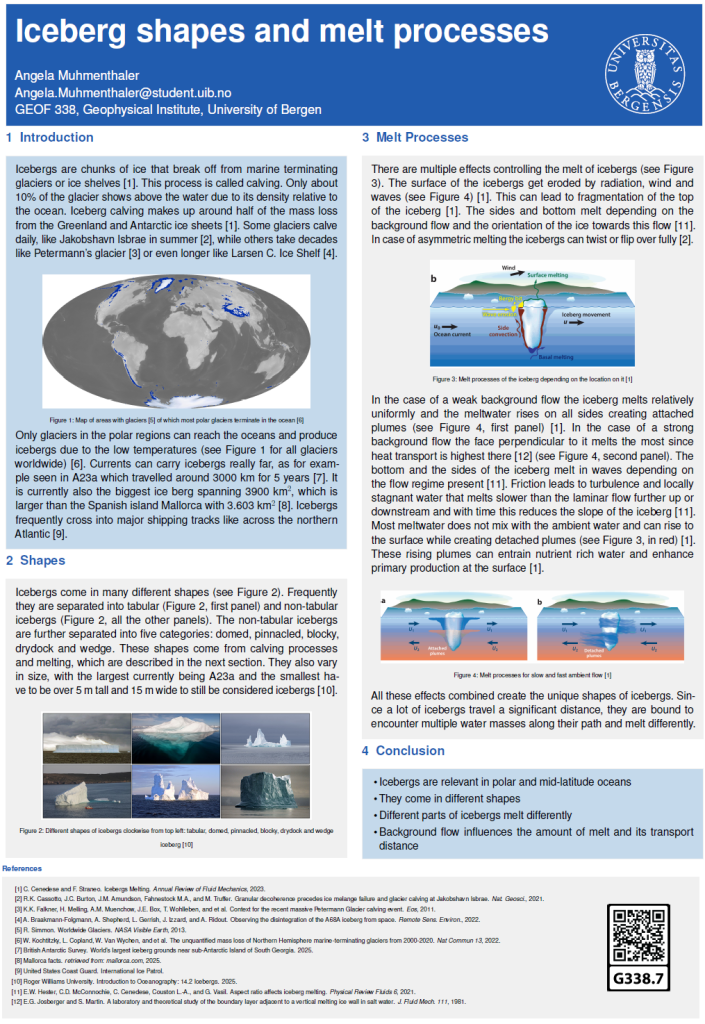Abstract
Icebergs are chunks of ice, which break off from marine terminating glaciers. They mostly stem from the Greenlandic and Antarctic Ice Sheets but can also be found in other areas in polar regions. They are a crucial feature of our oceans, since some major shipping tracks cross paths of larger icebergs. This poster looks at the shapes of icebergs and melt processes depending on the properties of the surrounding water.
In general icebergs have different shapes and can be separated into tabular (like a flat sheet) and non-tabular (other types of structures) icebergs. They also come in different sizes, with the smallest being 5 m tall and 15 m wide and the largest being 3900 km2, which is larger than the Spanish island of Mallorca. The icebergs melt due to multiple processes. These are surface melting due to solar radiation and wind, wave erosion on the side, convective melting at the submarine sides and basal melting at the bottom. These processes create different freshwater plumes depending on the background flow strength.


